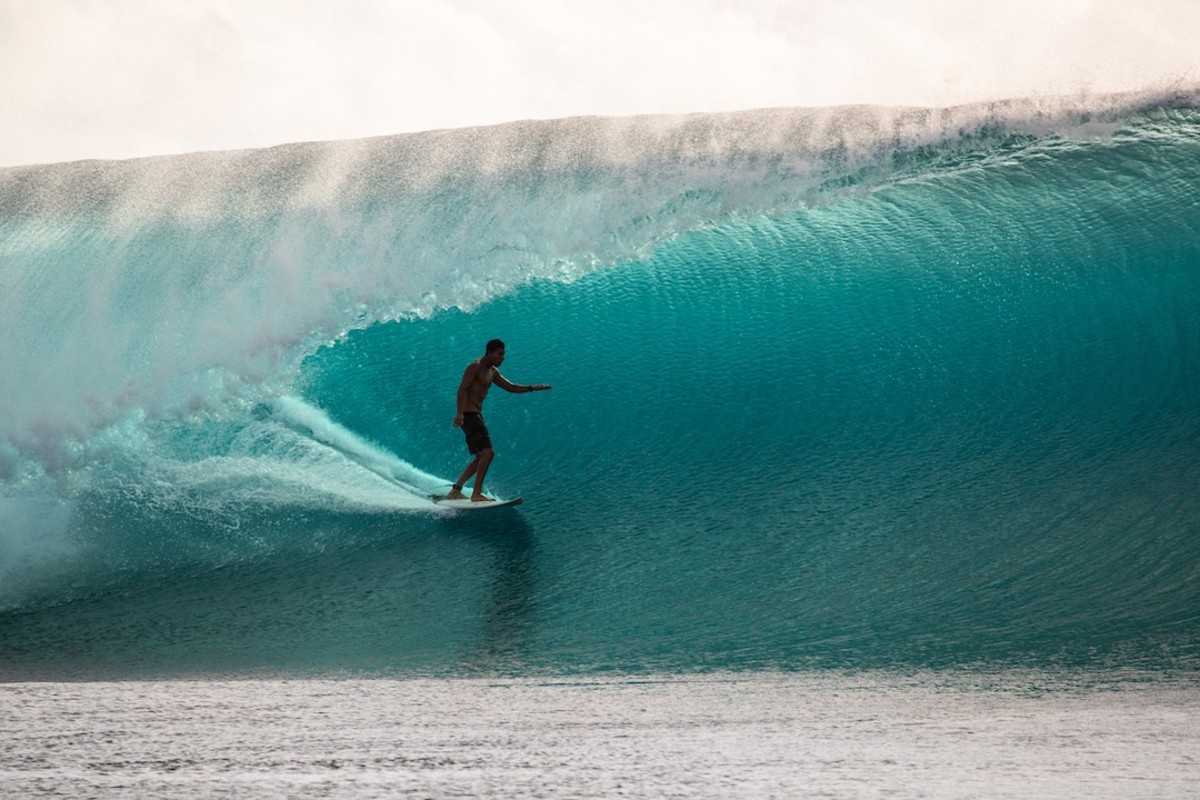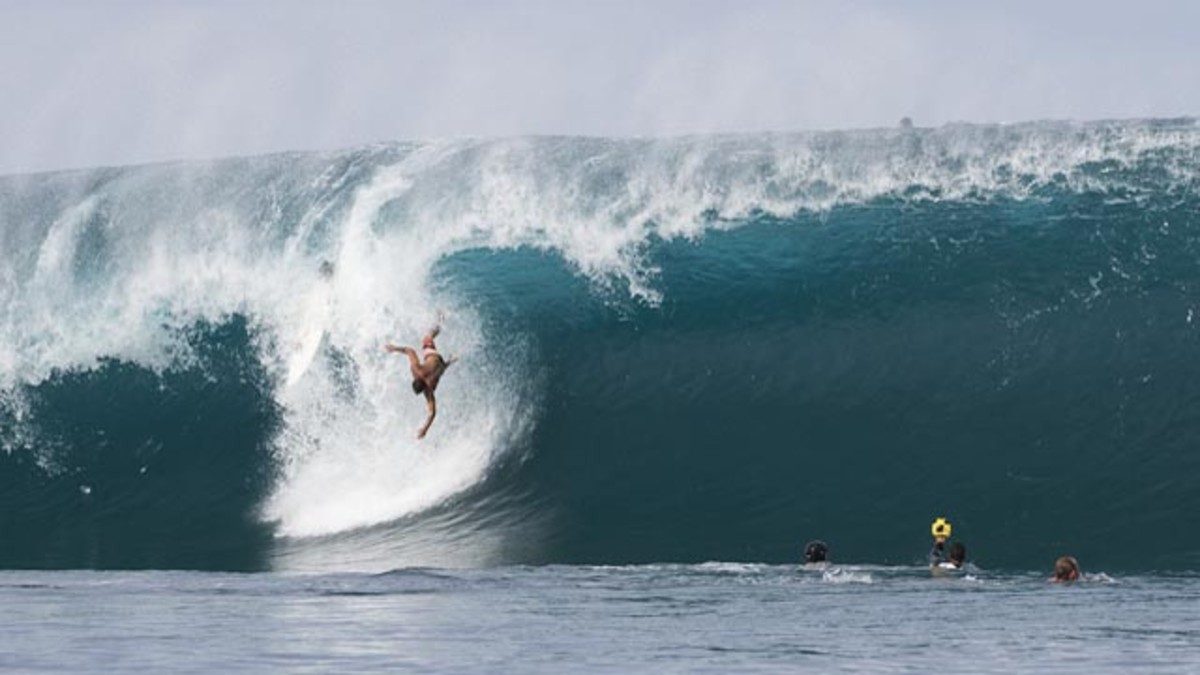When Kai Lenny tells you a wave is scary, you best believe it. The Maui native has dedicated his life to chasing waves, and he thrives in nearly every high-performance water sport under the sun. At 28, Lenny holds the 2019-’20 WSL Big Wave Award for men’s best overall performance, the 2020 XXL Biggest Wave Award for his 70-foot ride at Nazaré, and is the youngest person ever to have been inducted into the Surfers’ Hall of Fame. Although Lenny still has a lot of exploring to do, he’s ridden his fare share of heavy waves and has the stories and accolades to prove it. Here are the five scariest waves in the world, according to Kai Lenny.
Mavericks
Pillar Point Harbor, California
View this post on Instagram
Located just north of Half Moon Bay, Mavericks is a deep-water wave that offers some of the best and biggest surf in California. The spot typically lights up between November and March and works best on a west to west-northwest swell when the wind is light and the size is upwards of 20 feet. Due to the unique rock contours on the ocean floor, Mavericks can be a finicky wave and has been known to range in size anywhere from 20 feet to over 50 feet. The wave can be challenging even for the most seasoned big-wave surfers and claimed the lives of Hawaiian Mark Foo in 1994 and Sion Milosky in 2011.
“Mavericks is an extremely scary, super tall, cold wave,” says Lenny. “What makes it so gnarly is how all the water converges into one spot—it’s probably the loudest big wave on the planet because that cold water is a little more dense. When you hear the lip hit the water it almost sounds like thunder cracking.”
Nazaré
Nazaré, Portugal
View this post on Instagram
What was once a quiet fishing village has become regarded as home to one of the biggest, scariest waves in the world. Located in front of the lighthouse in North Beach, Nazaré is a beach break that can produce waves up to 100 feet in size and typically works best from October to March during a northwest or west swell. In 2018, Brazilian surfer Rodrigo Koxa claimed the Guinness World Record at the fabled spot by riding an 80-foot wave. Last year, fellow Brazilian Maya Gabeira notched a 73.5 footer there to claim the biggest wave ever surfed by a female (not to mention the biggest wave surfed by anyone in 2020).
“It’s probably the tallest wave on planet Earth and it breaks everywhere,” says Lenny. “It’s terrifying because you can ride a wave perfectly, kick out, and there can be the biggest wave you’ve ever seen in your life breaking in front of you. If your jet ski driver’s not there to pick you up, you’re going to get absolutely destroyed.”
Teahupo’o
Teahup’o, Tahiti
Unlike other big-wave surf spots, Teahupo’o is known not for its height but rather for its thickness and power. The South Pacific gem breaks over a razor-sharp reef, offering long, hollow waves and perfect barrels. The spot produces the best waves during the dry season, from May to August, and typically works best on a south to southwest swell, with south-southwest being the most ideal. In 2000, Tahitian surfer Brice Taerea lost his life at the spot, when a wave threw him against the reef.
View this post on Instagram
“The wave itself doesn’t get super tall but it gets extremely thick and it’s pretty much the closest thing to rideable tsunami,” says Lenny. “It’s a surge that comes over the reef and you’re basically surfing a wave that’s 30 feet thick, 30 feet tall, and is over six feet of the sharpest reef you’ve ever seen.”
Cloudbreak
Tavarua, Fiji

Consistently ranked as one of the top 10 best and most challenging waves in the world, Cloudbreak is situated on a sheltered reef, just a few miles away from Tavarua Island. The spot is a left reef break and although the waves typically max out at 20 feet, they are fast and the reef is shallow and sharp. Fiji produces surfable waves year round, but Cloudbreak yields the best conditions during a south or southwest swell.
“Cloudbreak is probably the most perfect, barreling long big wave that I’ve ever surfed,” says Lenny. “It’s also extremely powerful and breaks along a really shallow reef. I’ve seen it so big that it’s ripped chunks of the reef out and it smells like dead fish.”
Jaws
Paia, Maui
View this post on Instagram
Situated on the north shore of Maui, Jaws aka Pe’ahi, is regarded by many as the best and most surfable big waves on the planet. Ranging in size from 20 to 80 feet, the wave is consistent and versatile, making it well suited for both paddle- and tow-in surfing. The world-renowned spot works best during the winter months, with December typically being the most ideal, during a north-northwest swell.
“Jaws is one of the best big waves on the planet because it’s not only the tallest and one of the thickest, but it’s also perfect in the sense that you can paddle into the biggest wave of your life and then you can do almost any sport from tow-in surfing to windsurfing to foiling,” says Lenny. “It’s also probably the most brutal wipeout—it’s violent and it holds you down the longest.”
from Men's Journal https://ift.tt/35Z68S0






0 comments